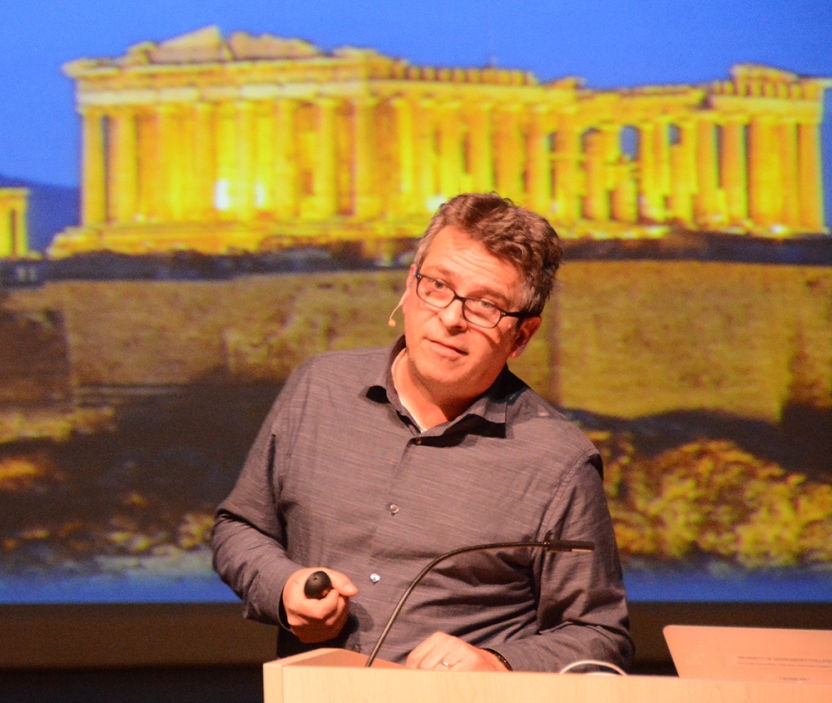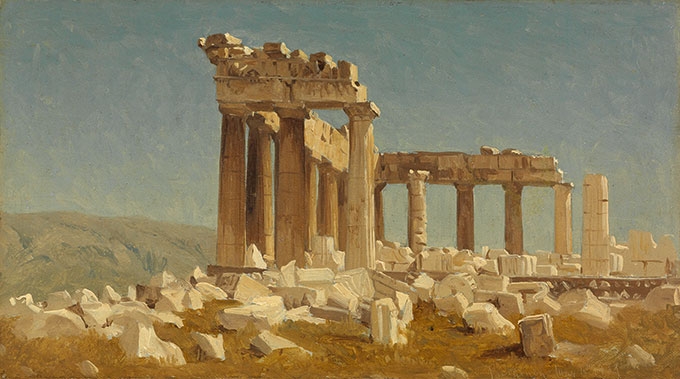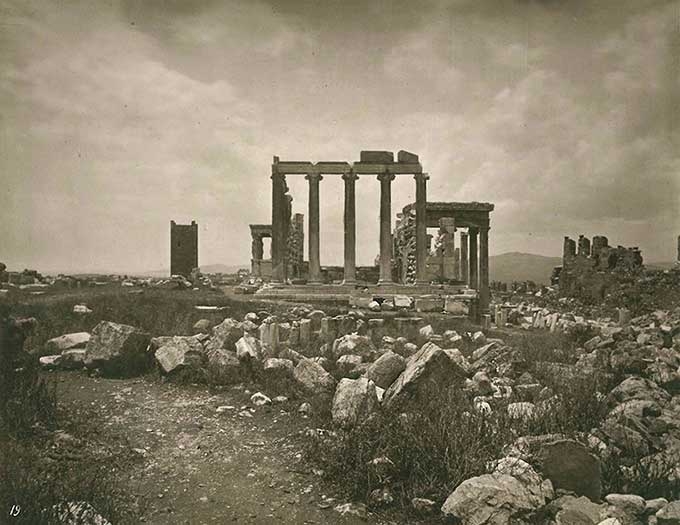The Acropolis Inspires New Exhibition and Gallery Talk

MIDDLEBURY, Vt. – Professor Pieter Broucke treated nearly 100 community members to an inside look at how the remarkable new exhibition at the Middlebury College Museum of Art was curated, during an illustrated, hour-long gallery talk on January 13.
The exhibition, titled “Untouched by Time: The Athenian Acropolis from Pericles to Parr,” brings together early archaeological publications, paintings, prints, drawings, photographs, stereoscopic views, and books – mostly from holdings at Middlebury – to chronicle changes to, and perceptions of, the iconic 2500-year-old monument on a rocky outcrop overlooking Athens.
The exhibit runs from January 10 to April 23 in the Overbrook Gallery at the Museum of Art located in the Mahaney Center for the Arts on Route 30 in Middlebury.
For the exhibition and his talk, Broucke focused on images from the last two-and-a-half centuries of the Parthenon (the temple of Athena) and the three other structures still standing at the Acropolis: the Propylaia (the gateway), the Erechtheion (the temple containing the famed “Porch of the Maidens”), and the reconstructed Temple of Athena Nike (celebrating Greek victory in war. The existing Acropolis of Athens was originally constructed during the Age of Pericles (roughly 461 to 429 BC) and was rebuilt during the Roman, Byzantine, and Ottoman periods.
As Broucke explained in his virtual gallery talk, which was held in the dance theatre adjacent to the Museum of Art to accommodate the sizeable audience, most of Western civilization was prevented from visiting Athens and connecting with the rich antiquity of Greece until the mid-18th century. Among the first visitors from the West, dubbed Early Travelers by Broucke, were Englishmen James Stuart and Nicholas Revett who, beginning in 1762, published a four-volume set titled Antiquities of Athens, one volume of which forms the earliest imagery in the exhibition.

Since the time of Stuart and Revett, “visitors have measured, drawn, painted, photographed, interpreted, admired, and even danced upon the antiquities of Athens, with each cultural epoch bringing its own aesthetic, technological, and even economic sensibility to bear upon how the notion of the classical as expressed by the Periclean Acropolis has been perceived,” said Broucke.
The curator of the exhibition, who also serves Middlebury as director of the arts, head of the architectural studies track, and associate curator of ancient art at the museum, focused next on early photography at the Acropolis and the growth of tourism on the hilltop. Greek independence (in 1832, from the Ottoman Empire) and the birth of photography (in 1839) attracted artists, historians, and travelers from the around the world to Athens, and the exhibition contains multiple images from this period, including several by the early American photographer William James Stillman.
After 1888, when George Eastman developed the first Kodak camera, tourists flocked to Athens, and Greek photographers such as Dimitrios Konstantinou and Petros Moraites produced images that were popular. The exhibition includes travel-album images by Konstantinou, Moraites, and other photographers.

The exhibit “Untouched by Time” also examines how the architecture of the Acropolis inspired Modernism with examples from architects Le Corbusier and Louis Kahn and photographers Edward Steichen and Martin Parr.
Beginning in 1975, a Committee for the Conservation of the Acropolis Monuments was formed, and works from this period form the final section of the exhibition, including nine dramatic images produced by Socratis Mavrommatis, the chief photographer for the Acropolis Restoration Service.
Today the Acropolis is a much-sought-after destination for world travelers with its “spectacle of history, gleaming marble, blue sky, and brilliant light,” said Broucke. “It does more than bear testimony to the greatness of Periclean Athens. It marks the birthplace of Western civilization and serves as a global symbol of democracy.”
Broucke’s talk was presented as part of the series “Off the Wall: Informal Discussions About Art” sponsored by the Middlebury College Museum of Art and the Committee on the Arts. In closing, Broucke thanked museum and Center for the Arts staffs along with Daniella Silva ’17, an art history major, who assisted with the exhibition.
– Reporting and photography by Robert Keren

